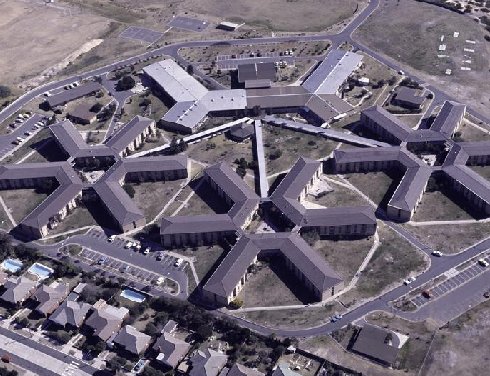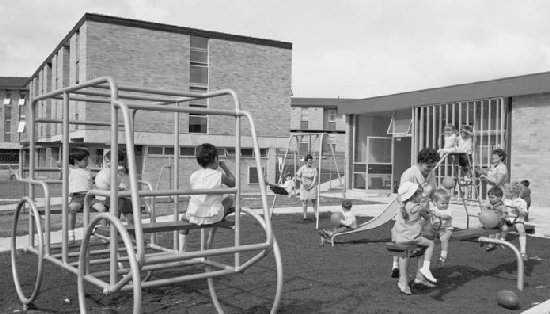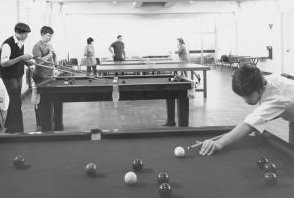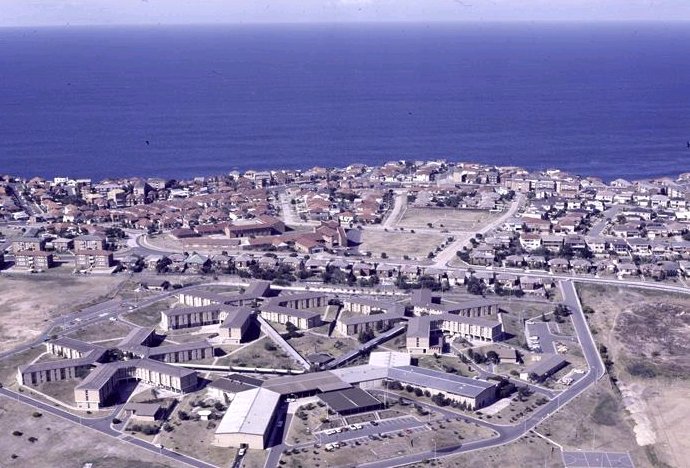HISTORY | STORIES | BEYOND BLOG & CREATE PEOPLE |
Endeavour Migrant Hostel, Coogee
Huge Purpose Built Facility The Endeavour Hostel was planned to replace the aging Bunnerong Hostel at Matraville which had repurposed former naval stores sheds and military barracks. Migrants were no longer refugees seeking emergency accommodation - the skilled migrants who were coming by the 1960s needed higher standards. Endeavour's network of internal roadways was accessed through Moverley Road, South Coogee and was built on unused land that had been Sydney's main naval stores site.  Aerial view of Endeavour Migrant Hostel at South Coogee, c1970 - National Archives of Australia -C5102-15
Purpose of Migrant Hostels Migrants and their dependents were permitted to remain in the hostels from 3 to 12 months, and were given training to assist with settlement in Australia, it was often said: "to help them get themselves on their feet". The reality was that in the post-war period, Australia was desperate for new productive labour, and wanted workers to be on-the-job as soon as possible without having to worry unduly about life's basics. Much of the early accommodation consisted of disused army huts and other converted buildings. These were gradually replaced with purpose built structures with improved facilities. When the Endeavour complex was officially opened in 1970, the emphasis of Australia's migration program had shifted in favour of European family groups. The design attempted to give enhanced accommodation standards and more privacy to family groups. One notable alumnus of the hostel was former Labor Senator Doug Cameron who arrived at Endeavour with his family in 1973. He recounted in his inaugural parliamentary speech that, like many other of the residents at Endeavour, he soon got work at the General Motors Holden car manufacturing plant at nearby Pagewood.
Replaced Dis-used Army Huts Marie remembers arriving at the South Coogee centre in 1972 as a child with her family in a group of Swedish immigrants. A bus dropped off the very jet-lagged group in the car park, and they went off to breakfast in the canteen. Her first Australian meal was pancakes. The children were taken to the education centre where they received lectures about all the "dangers" they might encounter in Australia such as snakes and spiders. They were told to always check the inside of their shoes before they put them on in case an insect had crawled in! When the gardener asked her the time, her reply was the first time she had used her school-learnt English in a conversational setting. Schooling for the children was at the nearby South Coogee Public School. Monica, of South Coogee, says the meals had a reputation of being quite good. She remembers some local youths, not living at the hostel, regularly heading down to the hostel's dining room when the meal-time alarm was sounded, to have a free, catered lunch. They lined up in the cafeteria with the hostel inmates to collect a meal and seated themselves at a table. No-one questioned them!
Evacuees also Housed Another local resident remembered the time his family lived in the public housing (Housing Commission) nearby. They were sometimes looked down on by the general community as "Houso's". It was a relief to see the migrants coming and going because they felt they could, in turn, look down on them: some-one worse off. It was, in turn, a shock to meet some of the migrants who were professionals ready to take up highly paid positions - sometimes just staying at Endeavour until regular housing could be arranged.
Sporting Teams Billets Migrants could come and go as they pleased. One account has a newly arrived migrant being concerned after an official told him that he would soon have him at Stalag Coogee when picked up at the airport and did not realise it was a lame attempt at humour. Once he had settled in, he ran into the official later who asked him if he would like a lift to Coogee Beach. "Is it allowed?" he asked. The official replied: "Mate, this Australia, you can do whatever you like!". Endeavour was specially designed to be an open institution where residents were expected to to use outside shopping facilities, schools and other facilities. It was expected that some residents would buy cars and 120 car parking places were provided. Sporting team members billeted there were not so free. They had to abide by strict curfews and training programs. In 1982, double gold medalist Neil Brooks, was "charged" by the swimming union for being 16 minutes late for the curfew after spending too much time on the phone with his girlfriend.
UNSW Students Marriane, who now lives at Maroubra, remembers arriving at Endeavour Hostel in 1980 as a student at UNSW. When she had received a placement offer at the university, her parents enquired about accommodation at university colleges but discovered that all places were taken up by Sydney-based students whose parents were "in the know", they had secured college accomodation well in advance. The university offered a place at the hostel as an alternative. In her wing, she shared with other students, and being a country girl, found the arrangements suited her because she could meet other like minded young people - many of whom became life-long friends. Other wings still housed migrants - but by then Australia's migration policies had shifted a notch and most of the migrant residents were now from Eastern Europe and the old Soviet Union.
Demolished for Houses
|
References
Copyright © Coogee Media All rights reserved
| CONTACT US | ABOUT US |



